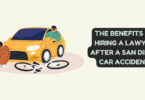
Extracting Data from Websites
Web scraping is a technique used to extract data from websites. It involves making HTTP requests to a website’s server, downloading the HTML of the web page, and then parsing that HTML to extract the data you want.
JavaScript can be used for web scraping in several ways. One way is to use a headless browser, such as Puppeteer, to load a web page and retrieve the data. This method is useful for scraping websites that rely heavily on JavaScript to load their content.
Another way to use JavaScript for web scraping is to use a library like Cheerio. Cheerio allows you to parse the HTML of a web page and extract the data you need, similar to how jQuery works on the frontend.
And web scrapers APIs are automated programs that collect data from websites. They can be used to extract specific information or to gather large amounts of data for analysis. Many websites provide APIs (Application Programming Interfaces) that allow developers to access their data in a structured, programmatic way, rather than scraping the website directly.
These APIs often include authentication and rate limiting to prevent overuse. Using an API can be a more efficient and reliable way to gather data from a website, as it is less likely to break if the website’s layout or structure changes. Additionally, some websites may block or limit scrapers but allow access to their APIs.
To start scraping a website using JavaScript, you’ll first need to install the necessary dependencies. For example, if you’re using Puppeteer, you’ll need to install it using npm:
npm install puppeteer
Once you have the necessary dependencies installed, you can use JavaScript to make an HTTP request to the website you want to scrape. For example, using Node.js and the request library:
const request = require(‘request’);
request(‘http://www.example.com’, (error, response, html) => {
// Do something with the HTML
});
You can also use the popular axios library to make the request
const axios = require(‘axios’);
axios.get(‘http://www.example.com’)
.then(response => {
// Do something with the HTML
})
.catch(error => {
console.log(error);
});
Once you have the HTML of the web page, you can use a library like Cheerio to parse the HTML and extract the data you need. Here’s an example of how you can use Cheerio to extract all of the links on a web page:
const cheerio = require(‘cheerio’);
const $ = cheerio.load(html);
$(‘a’).each((i, link) => {
console.log($(link).text());
});
You can also use the browser’s built-in parsing API called DOMParser() to parse HTML and XML documents.
let parser = new DOMParser();
let doc = parser.parseFromString(html, “text/html”);
It’s worth noting that web scraping can be against a website’s terms of service and may result in your IP being blocked. Therefore, it’s always a good idea to check a website’s “robots.txt” file before scraping it, and to make sure you’re not scraping too aggressively. Additionally, you should be mindful of the legal implications of web scraping, as some countries have specific laws regarding this practice.
In conclusion, JavaScript can be used for web scraping in several ways, including using headless browsers and parsing libraries. Before scraping a website, it’s important to be aware of the legal and ethical considerations involved.






